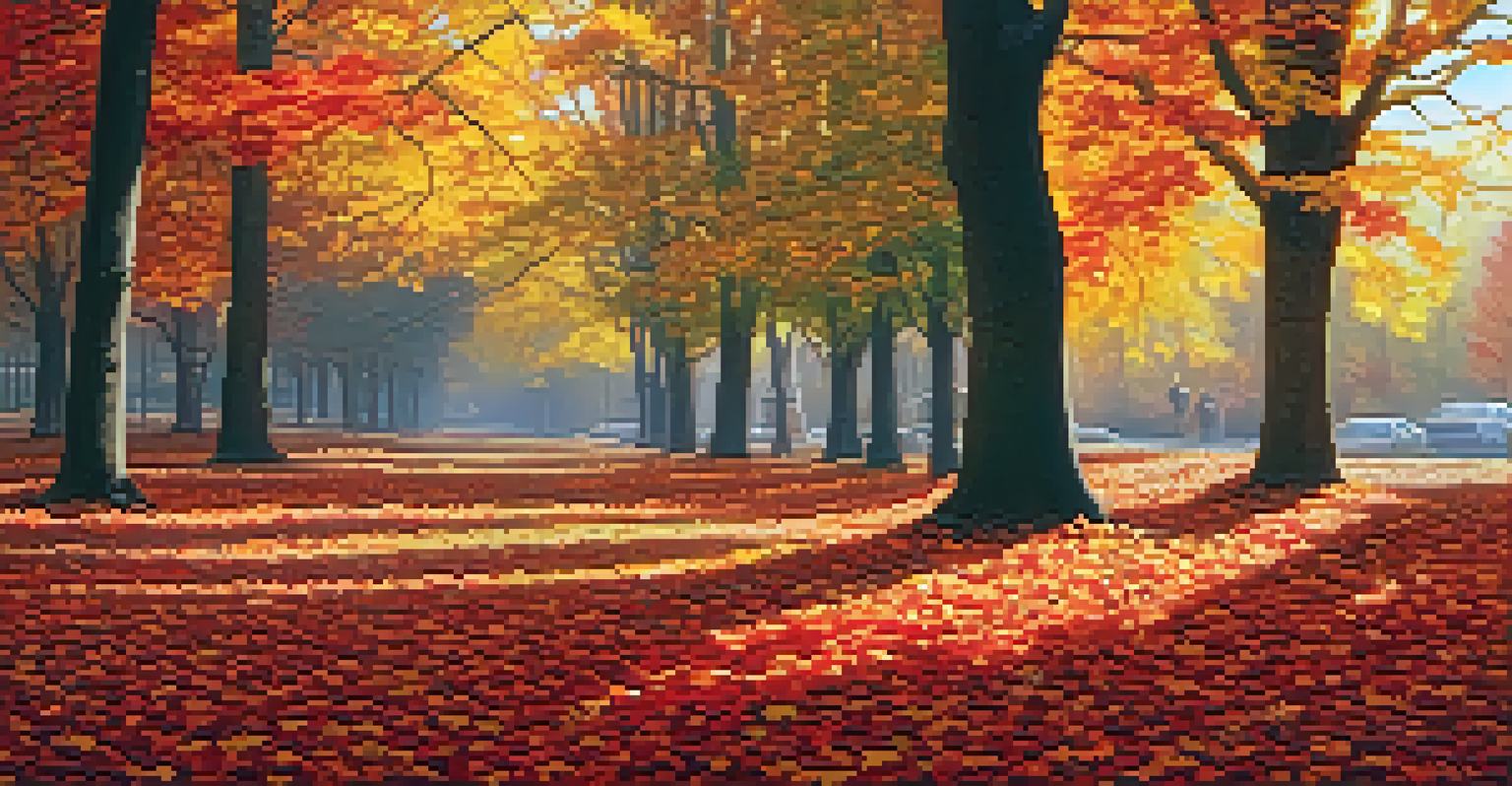How to Photograph Plants in Different Seasons Effectively

Understanding Seasonal Changes in Plants
Plants undergo significant transformations throughout the year, influenced by seasonal changes. In spring, vibrant blooms emerge, while summer brings lush greenery. Autumn showcases rich hues of orange and red, and winter often strips plants down to their skeletal beauty.
In every walk with nature one receives far more than he seeks.
Recognizing these seasonal shifts is crucial for photographers. Each season provides unique opportunities and challenges, affecting light, color, and texture. By understanding what to expect, you can better prepare for your shoots.
For instance, knowing that most flowers bloom in spring allows you to plan excursions to gardens or parks at the right time. This knowledge helps you create a seasonal calendar for your photography endeavors.
Choosing the Right Time of Day for Shoots
The time of day significantly influences how plants appear in photographs. Early morning and late afternoon, known as the 'golden hours,' provide soft, diffused light that enhances colors and reduces harsh shadows. This is especially beneficial in spring and summer when sunlight can be intense.

In contrast, midday light can create strong contrasts and wash out colors, making it less ideal for plant photography. However, winter can present unique opportunities where the low sun casts long shadows, giving a different depth and texture to your images.
Seasonal Changes Enhance Plant Photos
Understanding seasonal transformations in plants helps photographers plan their shoots for optimal beauty and variety.
By understanding how light interacts with plants at various times of the day, you can select the best moments for capturing their beauty. This strategic planning can elevate your photography to new heights.
Utilizing Natural Elements in Each Season
Every season brings its own natural elements that can enhance your plant photography. In spring, dew drops on petals can create magical effects, while summer's bright sun can highlight textures in leaves. Autumn provides a backdrop of fallen leaves, adding a rich tapestry of colors to your compositions.
Photography is the story I fail to put into words.
Winter, though seemingly barren, offers unique opportunities too. The contrast of evergreen plants against a snowy landscape can create stunning images, and frost can add a delicate touch to your shots. Each season has its own charm and unique elements.
Incorporating these natural elements into your photographs can add depth and narrative. For example, framing a blooming flower with autumn leaves can tell a story of transition and change.
Composition Techniques for Seasonal Plant Photography
Composition is key in creating visually striking plant photographs. The rule of thirds is a great starting point, where you can position your subject off-center to create balance. In spring, for example, placing a blooming flower on one side can draw the eye and create interest.
Additionally, experimenting with different angles can lead to captivating images. Shooting from below a plant can give it a majestic appearance, especially when framed against a clear sky in summer. Conversely, a top-down view can highlight patterns in autumn leaves.
Light Timing is Key for Capturing Beauty
Shooting during the 'golden hours' enhances plant colors and reduces harsh shadows, making for stunning photographs.
Don't be afraid to break the rules as you gain confidence. Allowing your creativity to flow will lead to unique compositions that capture the essence of each season.
Capturing the Mood of Each Season
Each season evokes different emotions, and capturing that mood can elevate your plant photography. Spring symbolizes renewal and growth, often associated with joy and hope. You can reflect this by focusing on bright, cheerful colors and lively compositions.
Summer brings warmth and vibrancy, where a sunny day can create a sense of relaxation. Capturing plants basking in the sun can evoke feelings of comfort and leisure. Use warm tones and soft focus to enhance this mood.
As the year winds down, autumn speaks of change and reflection. The rich, warm hues can convey nostalgia, while winter's starkness can evoke solitude. Being mindful of these emotional undertones can help you create compelling images.
Editing Techniques for Seasonal Plant Photos
Post-processing is an essential step in bringing out the best in your plant photographs. Software like Adobe Lightroom or Photoshop can enhance colors, adjust exposure, and sharpen details. For spring shots, you might want to boost saturation to make those blooms pop.
In contrast, winter photos might benefit from a cooler color temperature, adding to the chilly atmosphere. Adjusting contrast can also help bring out the textures of plants, making them stand out more dramatically against their backgrounds.
Composition and Perspective Matter
Using techniques like the rule of thirds and experimenting with angles can elevate the visual impact of plant photography.
Experimenting with different editing techniques can help you find the style that resonates with you. Remember, the goal is to enhance the natural beauty of your plants while still keeping the integrity of the original image.
Experimenting with Different Perspectives
Perspective can dramatically change the viewer's experience of your plant photography. Instead of traditional eye-level shots, consider getting low to the ground to capture flowers peeking through grass. This adds a unique vantage point that can draw viewers in.
In autumn, shooting upwards through branches can create a stunning effect of leaves against the sky, giving a sense of being enveloped by nature. In winter, a close-up of a frosted leaf can reveal intricate details that might go unnoticed from afar.

By diversifying your perspectives, you can tell a richer story through your images. Each angle offers a new narrative, inviting viewers to see plants in a fresh light.